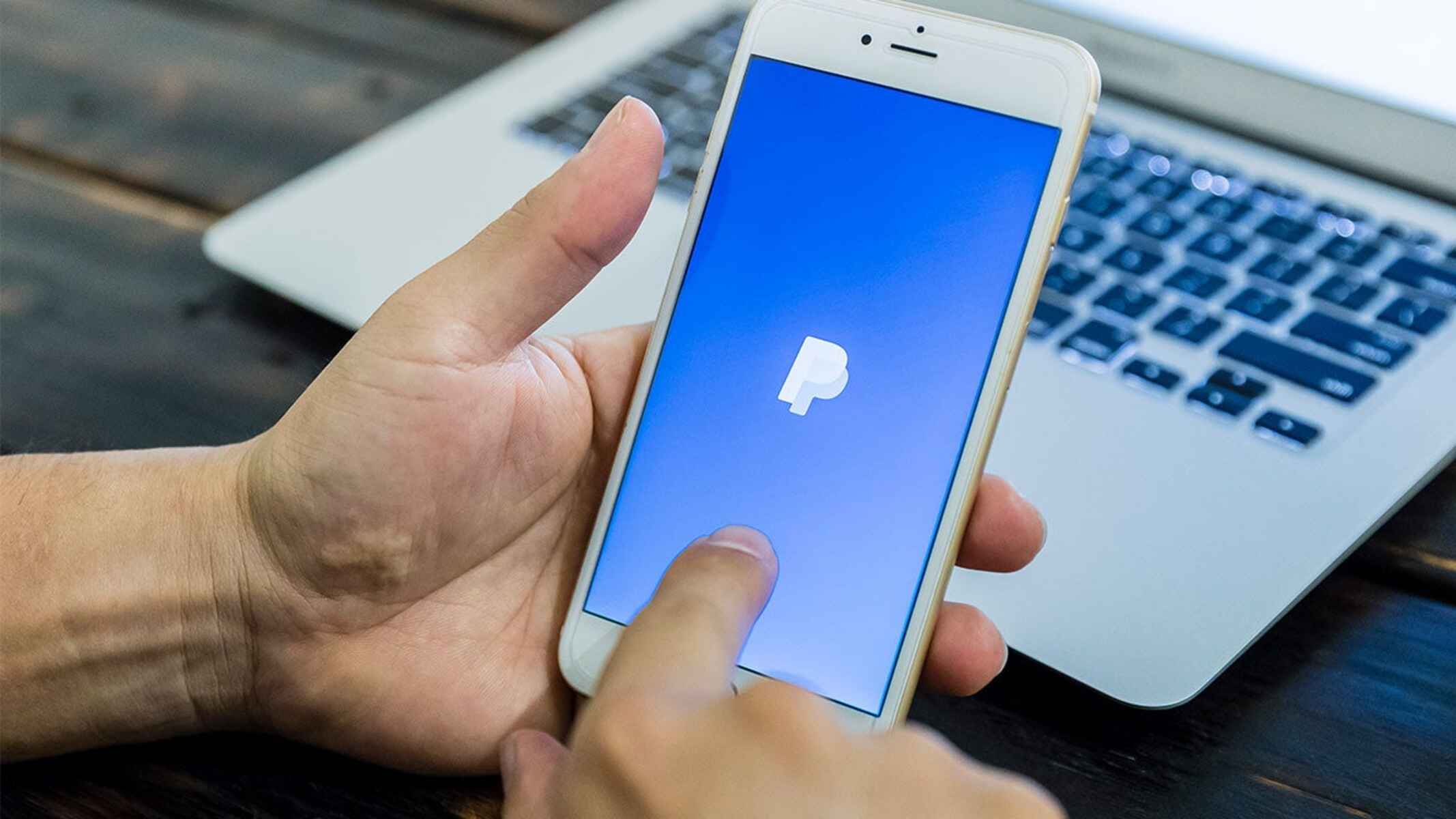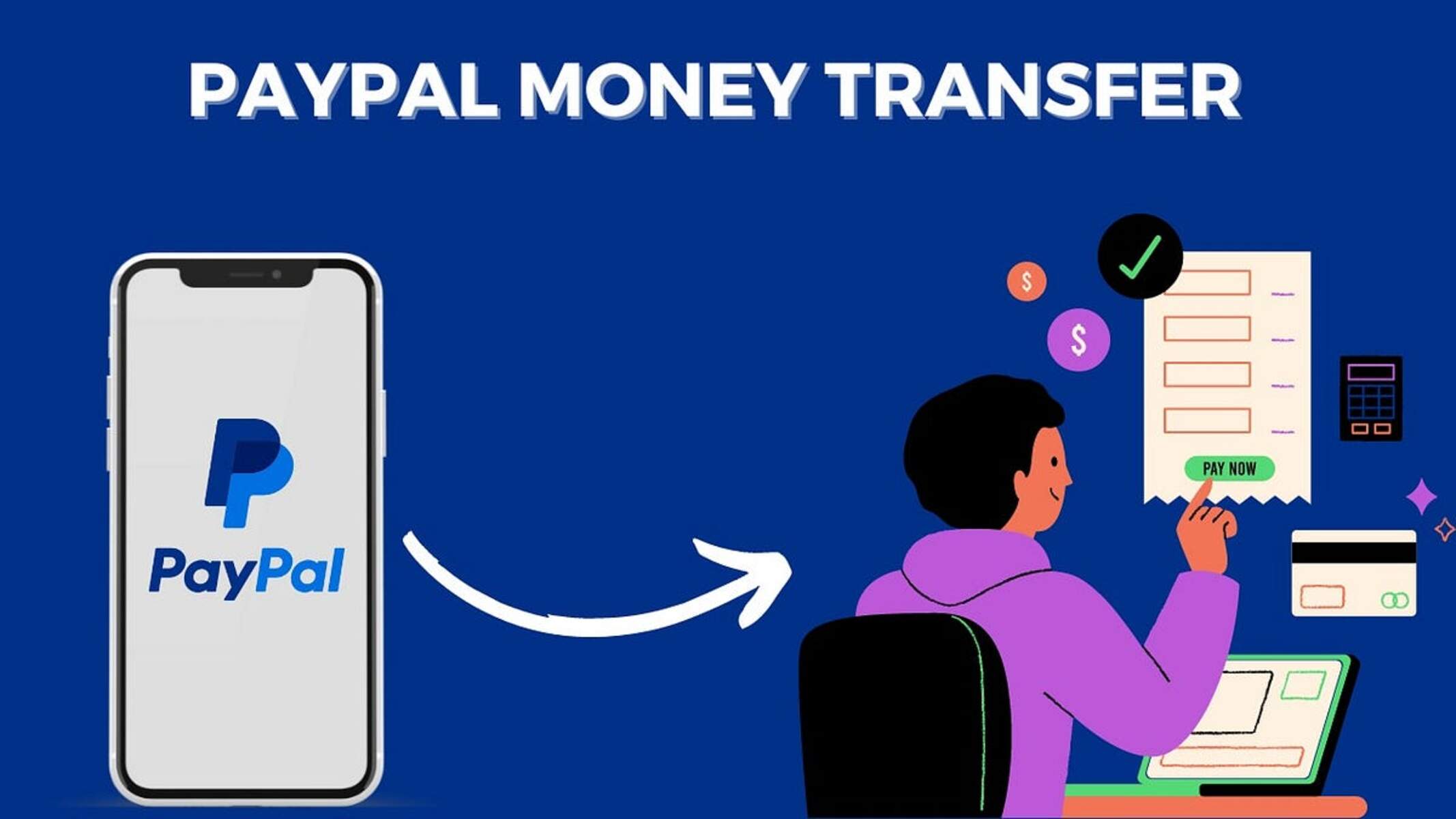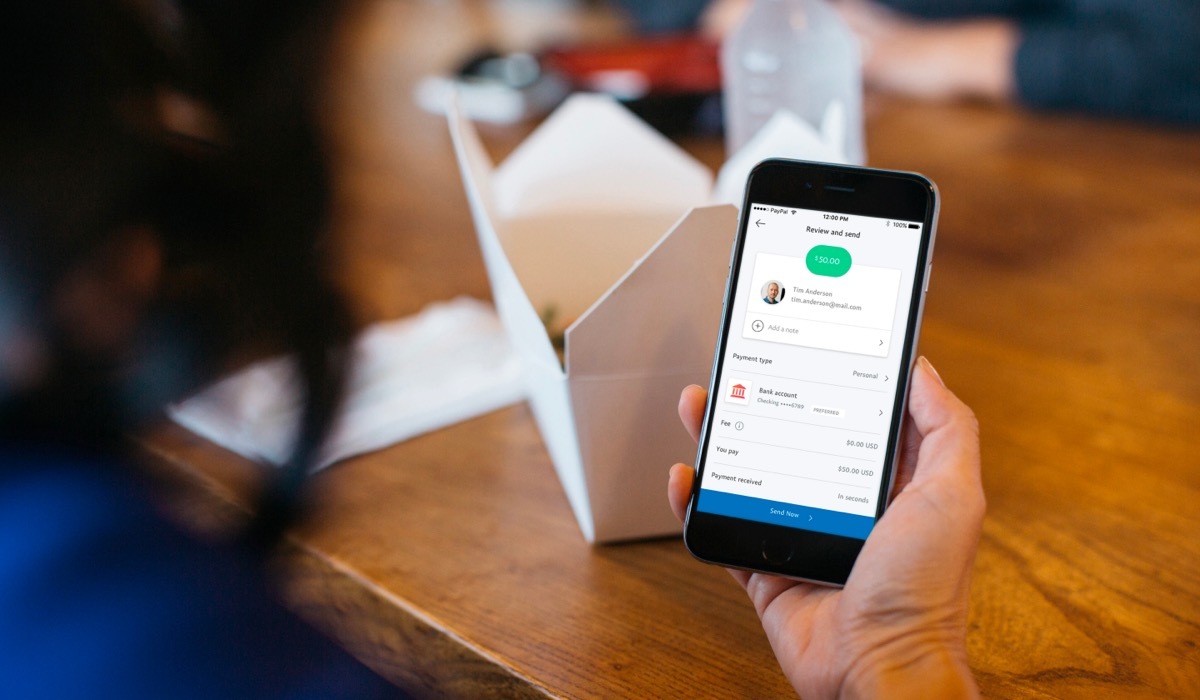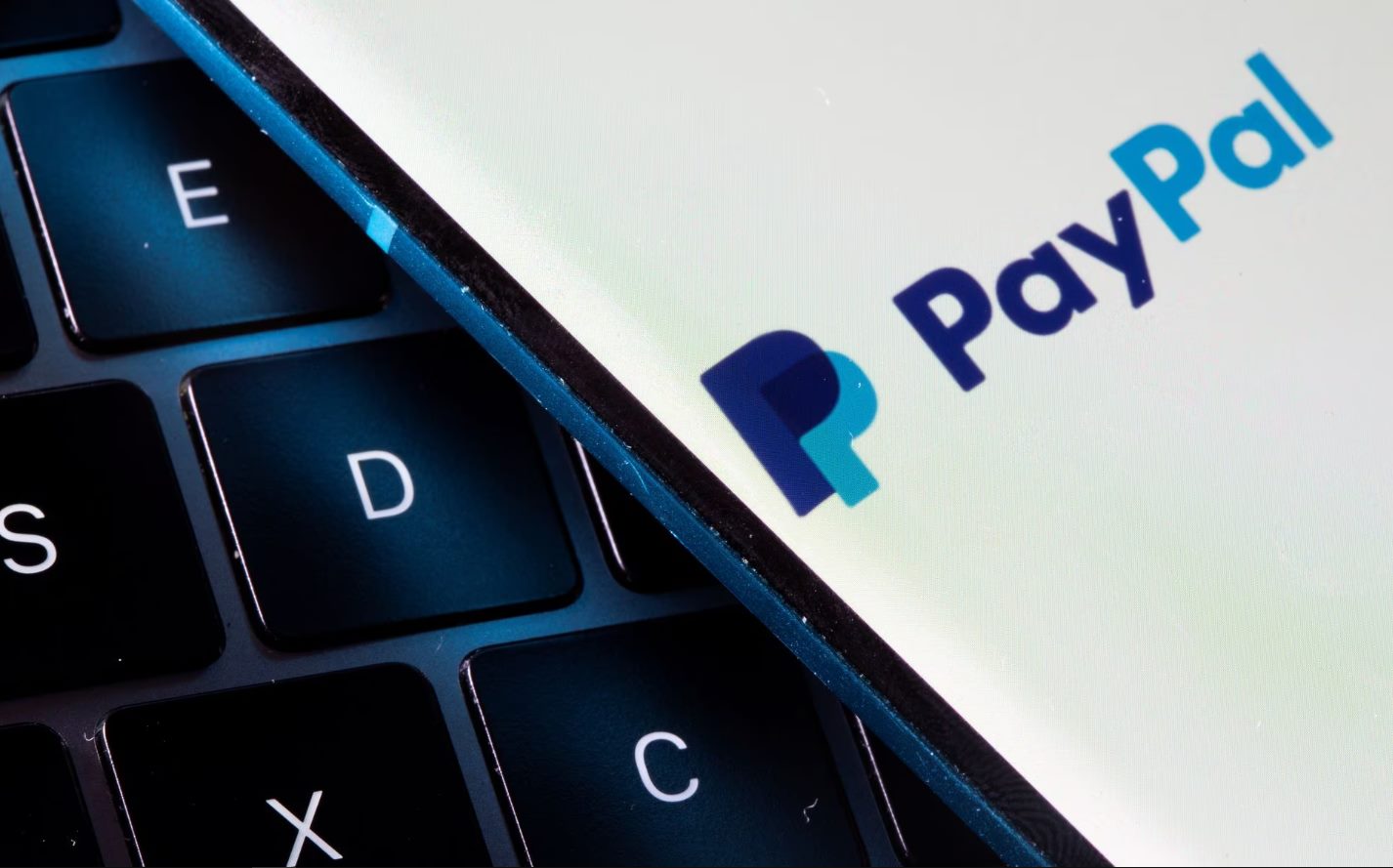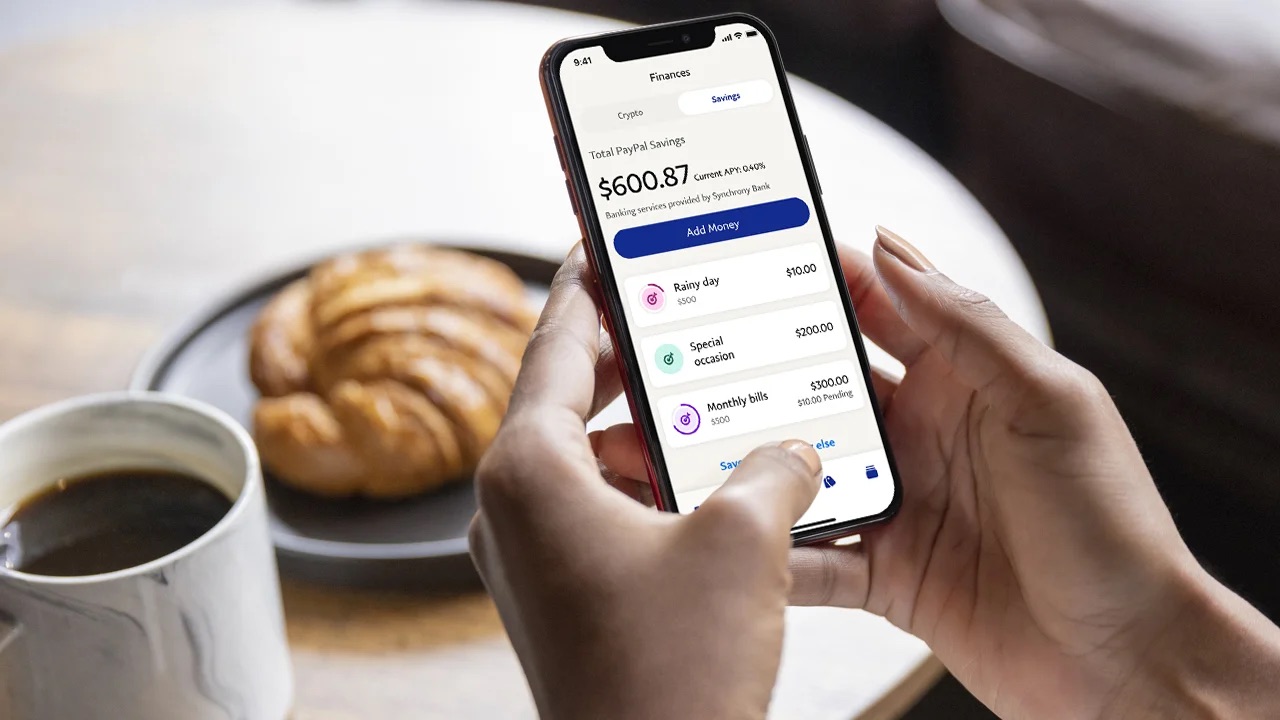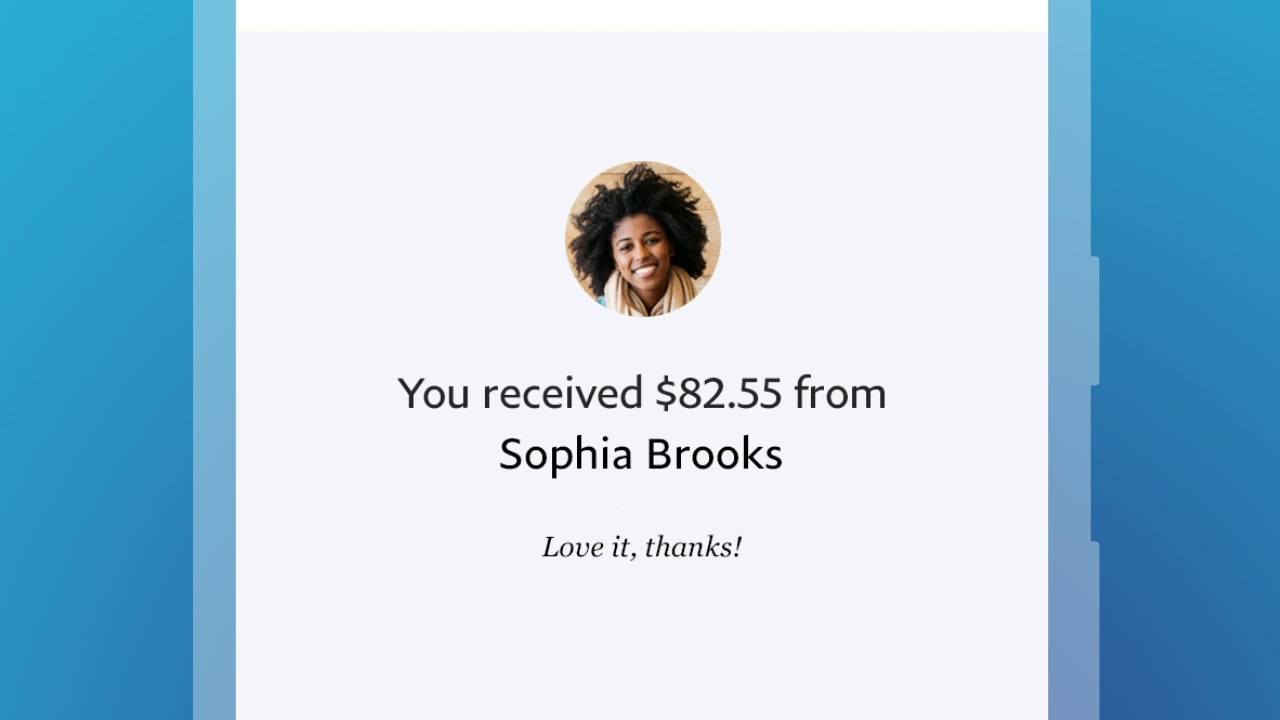Introduction
Welcome to the world of online payment solutions, where sending and receiving money is just a few clicks away. One such platform that has revolutionized the electronic payment landscape is PayPal. Whether you’re an online shopper, an e-commerce business owner, or someone looking to transfer funds to friends or family, understanding how PayPal works can save you time and provide peace of mind.
PayPal is a widely recognized and trusted online payment service that allows users to securely send and receive money electronically. It provides a convenient alternative to traditional methods like checks or bank transfers, enabling transactions to be completed in a matter of seconds rather than days. With over 325 million active accounts worldwide, PayPal has become the go-to payment solution for individuals and businesses alike.
In this article, we will delve into the intricacies of how PayPal operates, from setting up an account to sending and receiving funds. We will explore the steps required to get started, the fees associated with using PayPal, and the security measures that are in place to protect your financial information.
So, if you’ve ever wondered how this popular payment platform works, read on to discover the ins and outs of PayPal and how it can simplify your online financial transactions.
What is PayPal?
PayPal is an online payment platform that allows individuals and businesses to send and receive money securely over the internet. It was founded in 1998 and has since become one of the most widely used electronic payment systems globally. PayPal serves as a digital wallet, enabling users to link their bank accounts, credit cards, and debit cards to their PayPal accounts. This provides a seamless and convenient way to make online transactions without the need to share sensitive financial information.
As a user, you can use PayPal to shop online, pay for services, send money to friends and family, and even receive payments for goods or services rendered. PayPal supports transactions in multiple currencies and is accepted by millions of online merchants worldwide. Its ease of use, reliability, and strong security measures have made it a trusted choice for both individuals and businesses looking for a secure and convenient payment solution.
One of the key features of PayPal is its buyer protection program, which offers an added layer of security for online shoppers. When making a purchase through PayPal, buyers are eligible for a refund if the item they receive is significantly different from what was described or if it never arrives. This gives users peace of mind when making online purchases, as they know they have recourse in case of any potential issues.
In addition to its online payment services, PayPal also offers a range of other financial products and services. These include services for businesses such as invoicing, payment gateways, and merchant tools. PayPal also has a mobile app that allows users to manage their accounts, send and receive money, and even make in-store purchases using their smartphones.
Overall, PayPal provides a safe, convenient, and efficient way for individuals and businesses to make online transactions. Its widespread acceptance, strong buyer and seller protection policies, and user-friendly interface have made it an industry leader in the world of online payments.
How does PayPal work?
At its core, PayPal works as a digital wallet that allows users to securely store their financial information and make online transactions. The process of using PayPal involves a few key steps that are designed to ensure the security and convenience of both the sender and the recipient.
First and foremost, to utilize the services provided by PayPal, you need to create an account. This can be done by visiting the PayPal website or downloading the mobile app. During the account creation process, you will be asked to provide your email address, create a password, and enter your personal information such as your name and address.
Once your account is set up, you will need to link a payment method to your PayPal account. This can be a bank account, credit card, or debit card. Adding a payment method allows you to easily fund your PayPal balance and make payments without having to provide your financial information to every online merchant.
When you make a purchase using PayPal, you simply select it as your payment option during the checkout process. You will then be redirected to the PayPal login page, where you enter your email address and password to authorize the payment. PayPal will deduct the amount from your linked payment method or your PayPal balance, depending on your preference or available funds.
If you want to send money to friends or family, you can do so by selecting the “Send & Request” option on the PayPal website or app. You will be asked to enter the recipient’s email address or mobile number, the amount you wish to send, and a description (optional) for the transaction. Once you confirm the details, the funds will be instantly transferred to the recipient’s PayPal account.
Receiving money through PayPal is a straightforward process as well. When someone sends you money, you will receive an email notification with instructions on how to claim the funds. If you don’t have a PayPal account, you can create one to access the funds. If you already have an account, the funds will be automatically deposited into your PayPal balance.
It’s important to note that PayPal also offers additional financial services such as a credit line, where eligible users can apply for PayPal Credit to fund their purchases over time. PayPal also provides a range of business tools and solutions, including invoicing, payment gateways, and integration options for e-commerce platforms.
Overall, PayPal simplifies the process of online transactions by acting as a secure intermediary between buyers and sellers. Whether you’re shopping, sending money to loved ones, or running an online business, PayPal offers a convenient and reliable way to handle your financial transactions.
Setting up a PayPal Account
Setting up a PayPal account is a quick and straightforward process that allows you to start using the platform’s services. Here are the steps to get started:
1. Visit the PayPal website or download the PayPal mobile app: To begin, you can go to the official PayPal website or find the app on your preferred app store. The platform is available for both Android and iOS devices, ensuring accessibility for users across different operating systems.
2. Click on ‘Sign Up’: On the PayPal homepage, you’ll find a ‘Sign Up’ or ‘Create Account’ button. Clicking on this button will take you to the account creation page.
3. Choose your account type: PayPal offers different types of accounts to cater to different needs. Individual accounts are suitable for personal use, whereas business accounts are geared towards those running an e-commerce business or conducting transactions on behalf of a company.
4. Enter your personal information: You’ll be prompted to provide your personal details, such as your name, email address, and a password. Make sure to choose a strong, unique password to protect your account.
5. Confirm your email address: After creating your account, PayPal will send a verification email to the address you provided during registration. Open your email inbox, locate the email from PayPal, and click on the verification link to confirm your email address.
6. Link a payment method: To use PayPal for transactions, you need to link a payment method to your account. This can be a bank account, credit card, or debit card. PayPal will securely store your payment information, allowing you to make payments without having to enter your financial details for every transaction.
7. Complete the verification process: PayPal requires account verification to ensure the security of its users. You may be prompted to provide additional information, such as your address, date of birth, or the last four digits of your Social Security Number (in the United States), to complete the verification process. This step helps to confirm your identity and enhance the security of your account.
Once you’ve completed these steps, your PayPal account will be up and running. You can now start using PayPal to send and receive money, make online purchases, and access other features and services provided by the platform.
It’s important to note that PayPal has certain eligibility requirements and restrictions based on individual countries and regions. It’s always a good idea to review the terms and conditions specific to your location to ensure a smooth account setup process.
Verifying your PayPal Account
Verifying your PayPal account is an important step that enhances security and unlocks certain features and benefits. While it’s possible to use a PayPal account without verification, completing the verification process adds an extra layer of trust and credibility to your account. Here’s how you can verify your PayPal account:
1. Confirm your email address: When you sign up for a PayPal account, you’ll receive an email with a verification link. Click on the link to confirm your email address. This is the first step in the verification process and ensures that your communication with PayPal remains secure.
2. Link and confirm a bank account: To verify your PayPal account, you’ll need to link and confirm a bank account. This process can be done by providing your bank account details, including the account number and routing number. Once you’ve linked your bank account, PayPal will make a small deposit (typically a few cents) into your bank account. You will need to check your bank statement or internet banking to find the deposited amount. Once you have the exact deposit amount, return to the PayPal website and enter it in the verification section to complete the process.
3. Provide and verify your identification: Depending on your location and the specific requirements of your country, you may be asked to provide additional identification documents to verify your account. This step is often necessary to comply with anti-money laundering regulations and protect against fraud. PayPal may ask for documents such as a passport, driver’s license, or national identification card. You’ll need to upload clear, legible copies of these documents through the PayPal website or app for verification. PayPal’s system will then review the provided information and notify you of the verification status.
Once you’ve completed the verification process, your PayPal account will be fully verified, and you’ll gain access to additional benefits such as higher transaction limits and increased credibility with buyers and sellers. Verified accounts are generally more trusted by other PayPal users, which can lead to a smooth and secure online transaction experience.
It’s worth mentioning that each country may have specific requirements and processes for verification, so it’s essential to refer to PayPal’s guidelines and support documentation for your region. Additionally, keep in mind that PayPal periodically reviews accounts for security purposes, which means you may be asked to provide updated information or go through the verification process again in the future.
Verifying your PayPal account is a simple and necessary step to ensure the security and reputation of your online transactions. By completing the verification process, you can enjoy the peace of mind that comes with using a trusted and verified PayPal account for your financial transactions.
Linking your Bank Account or Credit Card
Linking your bank account or credit card to your PayPal account is a crucial step in using the platform for online transactions. By adding a payment method, you can easily fund your PayPal balance, make payments, and receive money. Here’s how you can link your bank account or credit card to PayPal:
1. Log in to your PayPal account: Visit the PayPal website or open the PayPal mobile app and log in using your email address and password. You will be directed to your account dashboard.
2. Go to the Wallet section: Navigate to the “Wallet” or “Bank Accounts and Cards” section of your PayPal account. This is where you manage your linked payment methods.
3. Link your bank account: To link your bank account, click on the “Link a Bank Account” or similar option. You will be asked to enter your bank account details, including the account number and routing number. These details can usually be found on your bank statement or provided by your bank’s customer service. Once you’ve entered the information, follow the on-screen instructions to complete the linking process. PayPal may require additional verification steps, such as confirming small deposits made into your bank account.
4. Link your credit card: If you prefer to link a credit card, select the “Link a Card” or similar option. Enter the required credit card details, including the card number, expiration date, and security code. PayPal will securely store your credit card information for future transactions.
5. Confirm the linked payment method: After linking your bank account or credit card, PayPal may require additional verification steps to ensure the security and accuracy of your account information. This could involve confirming small deposits or charges made to your bank account or credit card. Check your bank statement or credit card statement periodically to find these verification amounts, and then enter them in the designated area on the PayPal website or app.
Once you’ve successfully linked your bank account or credit card to your PayPal account, you can conveniently use PayPal as a payment method for your online transactions. When making a payment, simply select PayPal as your preferred payment option, and the funds will be deducted from your linked bank account or charged to your credit card, depending on your chosen payment method.
It’s important to note that PayPal encryption and security measures ensure the protection of your payment information. However, it’s also recommended to regularly review your linked payment methods and update them if needed. This can include updating expired credit cards or changing linked bank accounts if you switch banks.
By linking your bank account or credit card to your PayPal account, you can enjoy the convenience, flexibility, and security that PayPal provides for your online financial transactions.
Sending Money through PayPal
One of the primary functions of PayPal is the ability to send money to friends, family, or businesses securely and conveniently. Whether you’re repaying a debt, splitting a bill, or making a purchase, PayPal makes sending money a breeze. Here’s how you can send money through PayPal:
1. Log in to your PayPal account: Visit the PayPal website or open the PayPal mobile app and log in using your email address and password. Make sure you have sufficient funds in your PayPal account or have a linked payment method to cover the transfer.
2. Click on “Send & Request”: On the PayPal dashboard or main menu, locate the “Send & Request” option. Click on it to initiate the process of sending money.
3. Enter the recipient’s information: Provide the recipient’s email address or mobile number in the designated field. Confirm that the information is correct to ensure the funds are sent to the intended recipient.
4. Enter the amount and select the currency: Specify the amount you want to send and choose the currency if necessary. PayPal supports various currencies, making it suitable for international transfers.
5. Add a note (optional): If you want to include a message or note to accompany the money transfer, you can add it in the optional note field. This can be useful if you want to provide details about the purpose of the payment or any specific instructions.
6. Choose the payment method: Select the payment method you wish to use for the transfer. You can either use your PayPal balance if sufficient funds are available, or you can select a linked bank account or credit card. If using a linked payment method, ensure that it has sufficient funds or credit limit to cover the transaction.
7. Review and confirm: Take a moment to review all the details of the transaction, including the amount, recipient, and payment method. Once you’ve double-checked everything, click on the “Send” or “Confirm” button to initiate the transfer.
Once the transaction is completed, the recipient will receive an email notification notifying them of the funds. If they don’t have a PayPal account, they will be prompted to create one to claim the money. If they already have a PayPal account, the funds will be instantly added to their PayPal balance.
It’s important to note that PayPal may charge fees for certain types of transactions, such as international transfers or payments for goods and services. It’s advisable to review PayPal’s fee structure for a clear understanding of the costs associated with sending money.
Sending money through PayPal offers a secure, fast, and convenient way to transfer funds to individuals or businesses. Whether it’s sending money to family members, repaying a friend, or making online purchases, PayPal simplifies the process and provides peace of mind for both the sender and receiver.
PayPal Fees
PayPal offers a range of services and features that make online transactions easy and convenient. While many transactions on PayPal are free, there are certain fees associated with specific types of transactions. It’s important to understand these fees to ensure transparency and make informed decisions. Here’s an overview of PayPal’s fee structure:
1. Sending money to friends and family: When sending money to friends or family within your country using your PayPal balance or linked bank account, there are typically no fees involved. However, if you use a credit or debit card to fund the payment, a small fee may apply.
2. Purchase of goods and services: If you’re making a purchase or paying for goods and services, there are usually no fees for the buyer. PayPal charges the seller a transaction fee, which is a percentage of the total transaction amount. The exact fee percentage varies based on factors such as the seller’s location, the type of transaction, and the currency used.
3. International transactions: When sending money internationally or converting currencies, PayPal applies a fee based on the transaction amount and the country involved. This fee covers the costs associated with currency conversion and international transfers.
4. PayPal Seller Fees: For businesses and individuals receiving payments for goods or services, PayPal charges a transaction fee based on the total transaction amount received. The fee percentage depends on various factors, including the seller’s location, the transaction volume, and the type of goods or services being offered.
In addition to these transaction fees, PayPal may also charge other fees for certain services such as chargebacks, currency conversion, and receiving payments from another country. It’s important to review PayPal’s fee structure or contact customer support to understand these fees and any potential restrictions or limitations.
Keep in mind that PayPal periodically updates its fee structure, so it’s crucial to stay informed about any changes that may affect your transactions. Additionally, fees may vary depending on the country or region you’re operating in, so it’s recommended to check PayPal’s website or contact customer support for the most accurate and up-to-date information.
Understanding PayPal’s fee structure can help you make informed decisions when sending or receiving money. Whether you’re making personal payments, purchasing goods and services, or running an online business, knowing the fees associated with different types of transactions can help you manage your finances effectively and avoid any surprises.
Receiving Money through PayPal
PayPal offers a convenient way to receive money from individuals or businesses securely and quickly. Whether you’re a freelancer, an online seller, or receiving funds from friends and family, PayPal provides a reliable platform for receiving payments. Here’s how you can receive money through PayPal:
1. PayPal.me Link: One of the easiest ways to receive money is by sharing your personalized PayPal.me link with the sender. This link is unique to your PayPal account and allows others to send you money directly. Simply share the link via email, messaging apps, or social media, and the sender can click on it to initiate the payment process.
2. Invoice: For businesses or freelancers, creating a PayPal invoice is a professional way to request payment for goods or services. PayPal provides an invoice feature that allows you to generate customized invoices, including itemized lists, payment terms, and due dates. Simply send the invoice to the recipient’s email address, and they can make the payment directly from the invoice using their PayPal account or a credit card.
3. Request Money: If you prefer a more direct method, you can use PayPal’s “Request Money” feature. This allows you to send a payment request to the recipient, specifying the desired amount and the reason for the payment. The recipient will receive an email notification with a link to fulfill the payment request.
4. Online Store Integration: If you have an online store or e-commerce website, you can integrate PayPal as a payment option. This enables customers to make payments directly on your website using their PayPal accounts or credit cards. PayPal provides easy-to-use plugins and integrations for popular e-commerce platforms, making it seamless to receive payments for your products or services.
5. Manual Transfer: Another option is to manually transfer funds from your PayPal account to your linked bank account. This is particularly useful if you want to withdraw your PayPal balance as cash. Simply log in to your PayPal account, go to the “Withdraw” or “Transfer Money” section, select the linked bank account, enter the desired amount, and confirm the transfer. The funds will be transferred to your bank account within a few business days, depending on your bank’s processing times.
It’s important to note that PayPal may charge fees for receiving certain types of payments, such as payments for goods and services. The fees are typically deducted from the received amount, and the exact fee percentage varies based on your account type, location, and transaction volume. Review PayPal’s fee structure for a clear understanding of any applicable fees.
When you receive money through PayPal, you’ll receive email notifications for incoming payments. You can also log in to your PayPal account to view your transaction history, check the status of received payments, and monitor your account balance.
Receiving money through PayPal provides a secure and convenient way to receive payments from around the world. Whether you’re a freelancer, a business owner, or simply collecting funds from friends and family, PayPal offers a seamless experience for receiving and managing your incoming payments.
Withdrawing Money from your PayPal Account
Once you have funds in your PayPal account, you may want to withdraw the money to use it for various purposes, such as making purchases, paying bills, or transferring it to your bank account. PayPal offers convenient withdrawal options to cater to different needs. Here are the ways you can withdraw money from your PayPal account:
1. Bank Transfer: One of the most common methods of withdrawing money from your PayPal account is by transferring it to your linked bank account. To initiate a bank transfer, log in to your PayPal account, go to the “Withdraw” or “Transfer Money” section, select the bank account you want to transfer the funds to, enter the desired amount, and confirm the transfer. The money will be transferred to your bank account within a few business days, depending on your bank’s processing times.
2. Debit Card Transfer: If you have a PayPal Debit Mastercard linked to your PayPal account, you can withdraw funds instantly by using the card at an ATM or making purchases. This is a convenient option if you want immediate access to your PayPal funds without waiting for a bank transfer.
3. PayPal Cash Card: PayPal also offers a PayPal Cash Card, which is a prepaid card linked to your PayPal account. You can use this card to withdraw money from your PayPal account at ATMs or make purchases wherever Mastercard is accepted. The PayPal Cash Card provides instant access to your funds and is a suitable option for those who prefer using a physical card for withdrawals.
4. Check Request: If you prefer to receive a physical check, PayPal allows you to request a check to be mailed to your registered address. To request a check, log in to your PayPal account, go to the “Withdraw” or “Transfer Money” section, select “Request a Check,” enter the necessary details, and submit the request. It’s important to note that there may be fees associated with requesting a check, and it can take several business days or longer for the check to arrive.
It’s important to note that PayPal may have certain limitations and restrictions on withdrawal amounts and frequencies, depending on your account type and location. It’s advisable to review PayPal’s terms and conditions and withdrawal policies to ensure compliance with any applicable guidelines.
When withdrawing money from your PayPal account, keep in mind that there may be fees associated with certain withdrawal methods. For example, bank transfers are often free, but there may be fees for instant transfers using the PayPal Debit Mastercard.
Review PayPal’s fee structure and withdrawal policies to understand any applicable fees or restrictions on withdrawing funds from your PayPal account.
Withdrawing money from your PayPal account is a straightforward process that allows you to access your funds for spending or transferring to your bank account. PayPal offers flexible withdrawal options, ensuring that you can easily manage and utilize your PayPal balance according to your preferences.
PayPal Security Measures
PayPal places a strong emphasis on security to protect the financial information and transactions of its users. With millions of users worldwide, PayPal has implemented various measures to safeguard against fraud, unauthorized access, and other security threats. Here are some of the security measures PayPal has in place:
1. Encryption: PayPal utilizes industry-standard encryption techniques, such as Secure Sockets Layer (SSL) and Transport Layer Security (TLS), to ensure that all data exchanged between users’ devices and PayPal’s servers remains secure. This encryption protects sensitive information, such as login credentials and financial details, from being intercepted by unauthorized individuals.
2. Two-Factor Authentication: PayPal supports two-factor authentication (2FA), also known as multi-factor authentication, as an additional layer of security. Users can enable 2FA for their accounts, requiring them to provide a secondary authentication method, such as a unique code sent to their mobile device, in addition to their usual login credentials.
3. Buyer and Seller Protection: PayPal offers buyer and seller protection programs to safeguard against fraudulent transactions or disputes. Buyer protection helps ensure that buyers receive the items they paid for, while seller protection offers coverage against unauthorized payments or claims. These programs provide peace of mind for both buyers and sellers, protecting them from financial losses resulting from fraudulent activities.
4. Suspicious Activity Monitoring: PayPal continuously monitors transactions and account activity for any signs of suspicious or abnormal behavior. If any suspicious activity is detected, PayPal’s systems may temporarily limit certain account functionalities or prompt users to verify their identity to prevent unauthorized access.
5. Secure Shopping: In addition to its own security measures, PayPal offers a secure shopping experience for users through its integration on various e-commerce platforms. When users make purchases using PayPal, their financial information is not shared with the merchants, reducing the risk of their data being compromised in case of a security breach on the retailer’s side.
6. Account Notifications: PayPal sends email notifications to users for various account activities, such as login attempts, changes to account settings, or transactions. These notifications allow users to stay informed about their account’s activity and quickly identify any unauthorized access or suspicious transactions.
7. Phishing Prevention: PayPal actively works to prevent phishing attempts, where malicious individuals try to trick users into revealing their account information through fraudulent emails or websites. PayPal provides guidelines on recognizing and avoiding phishing attempts and recommends users to access their accounts directly through the official PayPal website or app.
It’s important for users to take their own precautions when using PayPal or any online financial platform. This includes creating strong passwords, keeping software and devices up-to-date, and being cautious of potential phishing attempts or suspicious links. Regularly reviewing account activity and reporting any unauthorized transactions to PayPal can also help maintain account security.
Overall, PayPal’s security measures aim to protect the confidentiality, integrity, and availability of user data and transactions. By implementing robust security protocols and educating users about online safety, PayPal strives to provide a secure platform for conducting financial transactions and protecting its users from potential security risks.
Conclusion
PayPal has become a renowned name in the online payment industry, providing individuals and businesses with a secure, convenient, and reliable platform for sending and receiving money. Whether you’re shopping online, running an e-commerce business, or simply splitting a bill with friends, PayPal offers a range of features and services to simplify your financial transactions.
From setting up a PayPal account and verifying its identity to linking bank accounts or credit cards, PayPal streamlines the process of managing your digital wallet. Sending money to friends and family is as easy as entering an email address or mobile number, while receiving payments for goods or services can be seamlessly done through PayPal’s invoice system or customized payment links.
PayPal prioritizes user security and implements various measures to protect sensitive information and prevent fraudulent activities. With encryption protocols, two-factor authentication, and continuous monitoring of suspicious activity, PayPal ensures that your financial data remains safe from unauthorized access.
PayPal’s buyer and seller protection programs further enhance the trust and confidence of its users, offering coverage against fraudulent transactions or unauthorized payments. With these protections in place, both buyers and sellers can feel secure when making transactions through the platform.
PayPal’s fee structure is transparent, providing clarity on the costs associated with various types of transactions. While certain fees may apply for specific services, PayPal offers a range of options to suit different needs, including free transfers between friends and family or for certain purchases.
By offering multiple withdrawal options, such as transferring funds to a bank account or using a PayPal debit card, PayPal ensures that users have quick and flexible access to their funds. With PayPal’s commitment to security and customer support, you can have peace of mind when managing your finances through the platform.
In conclusion, PayPal has revolutionized the way we handle online transactions and has become a staple in the digital payments landscape. Its user-friendly interface, robust security measures, and range of features make it a top choice for individuals and businesses alike. Whether you’re shopping online, sending money to loved ones, or running an e-commerce business, PayPal simplifies the process, providing a reliable and convenient way to manage your finances in the digital age.







